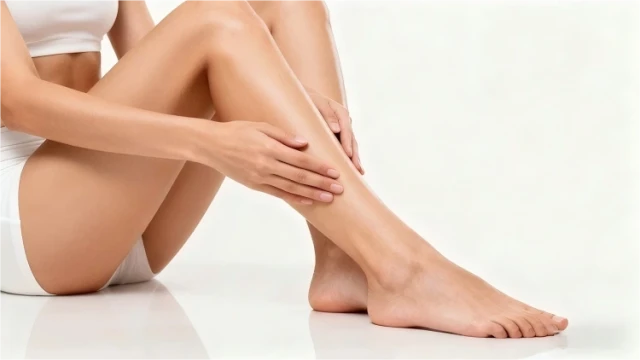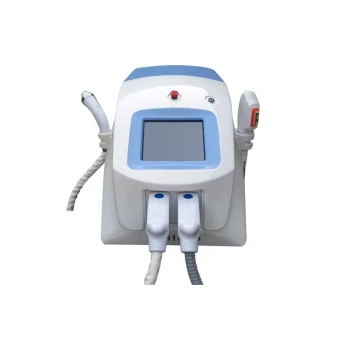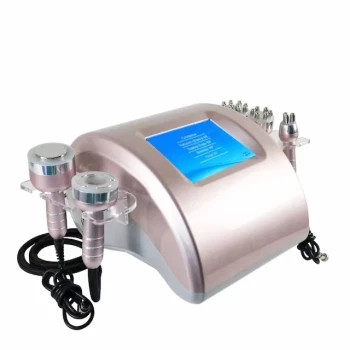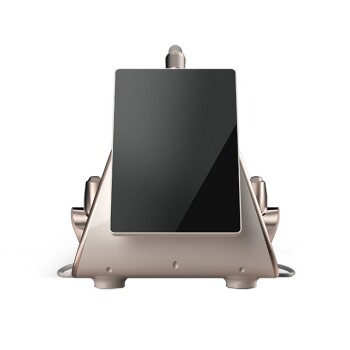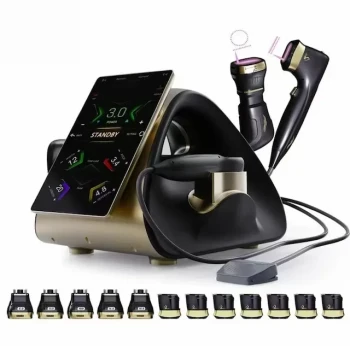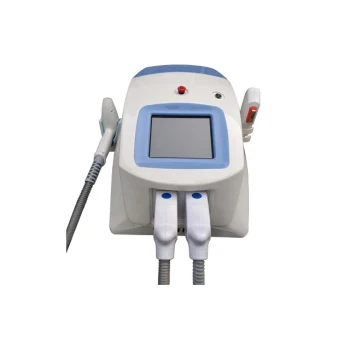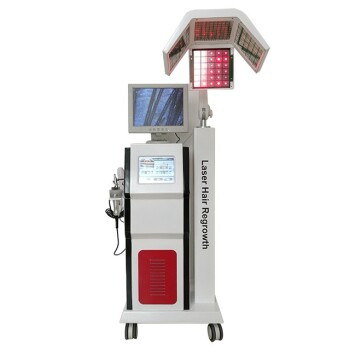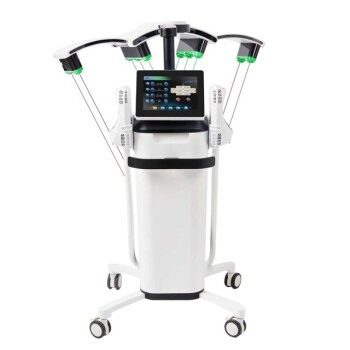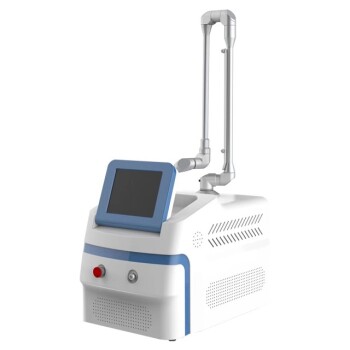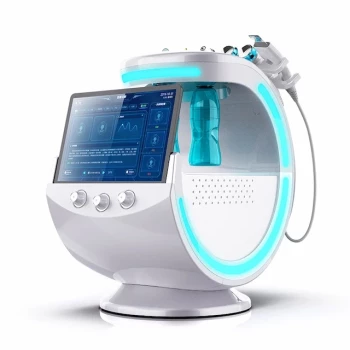Introduction
Intense Pulsed Light (IPL) therapy has become a go-to solution for addressing diverse skin concerns—from pigmentation issues to vascular conditions. But how exactly does it work for different problems? And who should consider it? This guide breaks down IPL’s condition-specific efficacy, backed by clinical insights, to help you make informed decisions about your skin health.
How IPL Works for Diverse Skin Concerns
IPL uses broad-spectrum light to target specific skin structures without damaging surrounding tissue. Unlike lasers, which use a single wavelength, IPL’s adjustable filters allow customization for various concerns. Here’s how it addresses common issues:
Targeting Pigmentation: Melasma vs. Sun Spots
- Melasma: IPL can reduce stubborn patches by breaking up excess melanin clusters, though results vary based on skin type and hormonal factors.
- Sun Spots: More responsive than melasma, IPL often clears sun-induced hyperpigmentation in 3–5 sessions by selectively heating melanin deposits.
Ever wondered why some pigmentation fades faster than others? It’s all about melanin concentration and depth.
Vascular Solutions: Rosacea and Spider Veins
- Rosacea: IPL calms inflammation by targeting dilated blood vessels, reducing redness and flushing. Studies show significant improvement in 70% of patients after 4 sessions.
- Spider Veins: The light coagulates tiny veins, causing them to dissolve naturally. Optimal for facial veins; deeper leg veins may require lasers.
Collagen Renewal: Wrinkles and Scar Improvement
- Wrinkles: IPL stimulates collagen by heating the dermis, leading to gradual plumping. Best for fine lines rather than deep folds.
- Scars: Research notes a 50% improvement in hypertrophic scars after ~3 sessions, as IPL reduces redness and promotes even texture.
Think of IPL as a "reset button" for overactive pigment or blood vessels—precise yet gentle.
Critical Considerations Before Choosing IPL
Ideal Candidates and Contraindications
Who benefits most?
- Fair to medium skin tones (Fitzpatrick I–III)
- Those with sun damage, rosacea, or superficial pigmentation
Who should avoid it?
- Recent sunburns or active tans (risk of burns)
- Pregnant/breastfeeding women
- HSV patients (may trigger outbreaks; antiviral prophylaxis advised)
IPL vs. Laser: Key Differences in Results
| Feature | IPL | Laser |
|---|---|---|
| Precision | Broad-spectrum; less focused | Single-wavelength; exact |
| Downtime | Minimal (redness for 1–2 days) | Longer (crusting/scabbing) |
| Best For | Surface-level concerns | Deep or localized issues |
Choosing between IPL and laser? Ask: Is my concern broad (e.g., diffuse redness) or localized (e.g., a single dark spot)?
Conclusion: Making an Informed Decision
IPL offers versatile solutions, but success hinges on matching the treatment to your skin type and condition. Always consult a professional to assess suitability—factors like recent sun exposure or underlying sensitivities can impact safety and results.
For clinics and salons, offering Belis IPL devices ensures customizable, reliable treatments that meet diverse patient needs. Ready to explore how IPL can transform your skin strategy? Start with a thorough consultation to map out a personalized plan.
Products You Might Be Looking For:
Explore advanced IPL skin therapy devices
Visual Guide
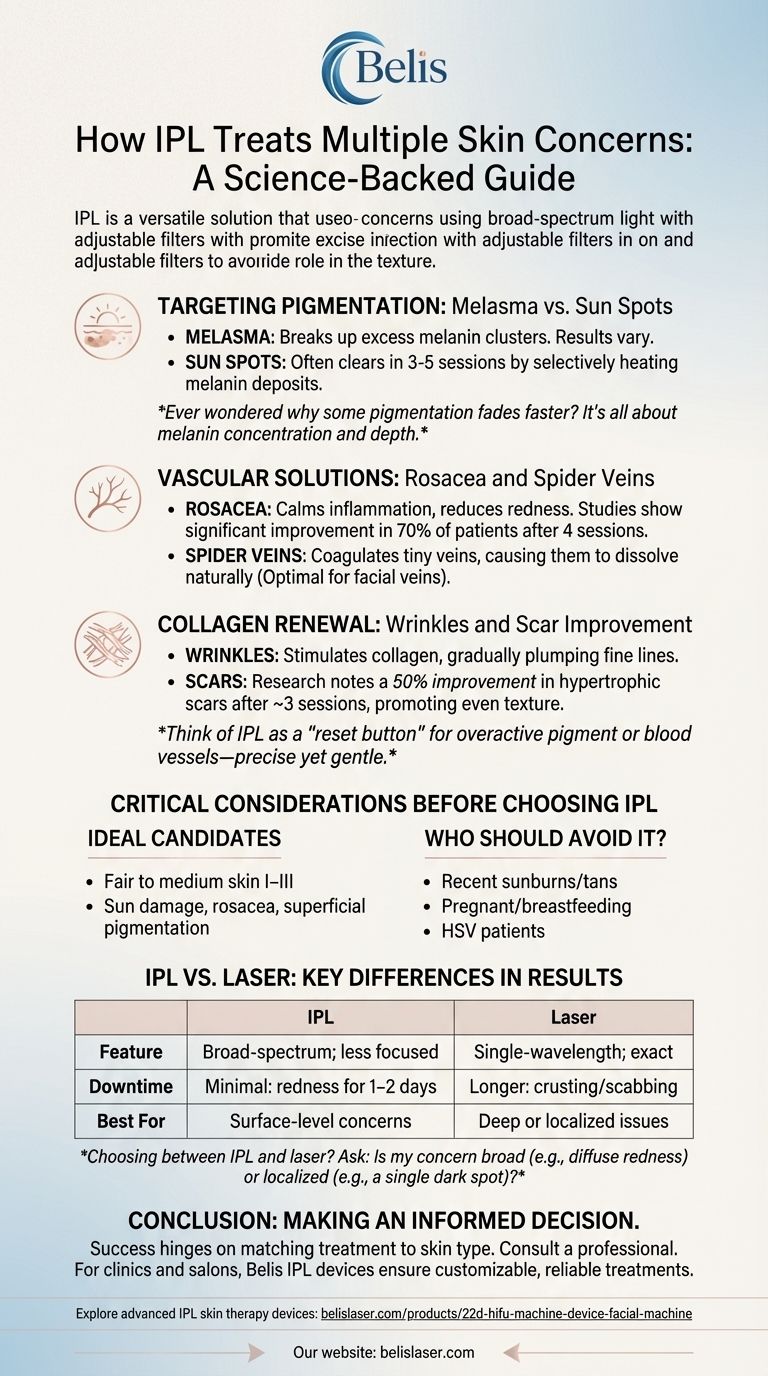
Related Products
- IPL SHR+Radio frecuency machine
- Clinic Use IPL SHR ND YAG Laser Hair Removal RF Skin Tightening Machine
- Ultrasonic Cavitation Radiofrecuency Machine for Body Slimming
- 4D 12D HIFU Machine Device for Skin Tightening and Lifting
- 4D 12D HIFU Machine Device for Skin Tightening
Related Articles
- The Science Behind SHR Sessions: Why Multiple Treatments Deliver Lasting Results
- Why IPL Can't Deliver Permanent Hair Removal (And How to Get Closer)
- How IPL Technology Treats Multiple Skin Conditions Beyond Hair Removal
- How IPL Treats Multiple Body Areas Safely: A Dermatologist-Approved Guide
- HIFU vs. Surgical Facelifts: A Non-Invasive Path to SMAS Rejuvenation
